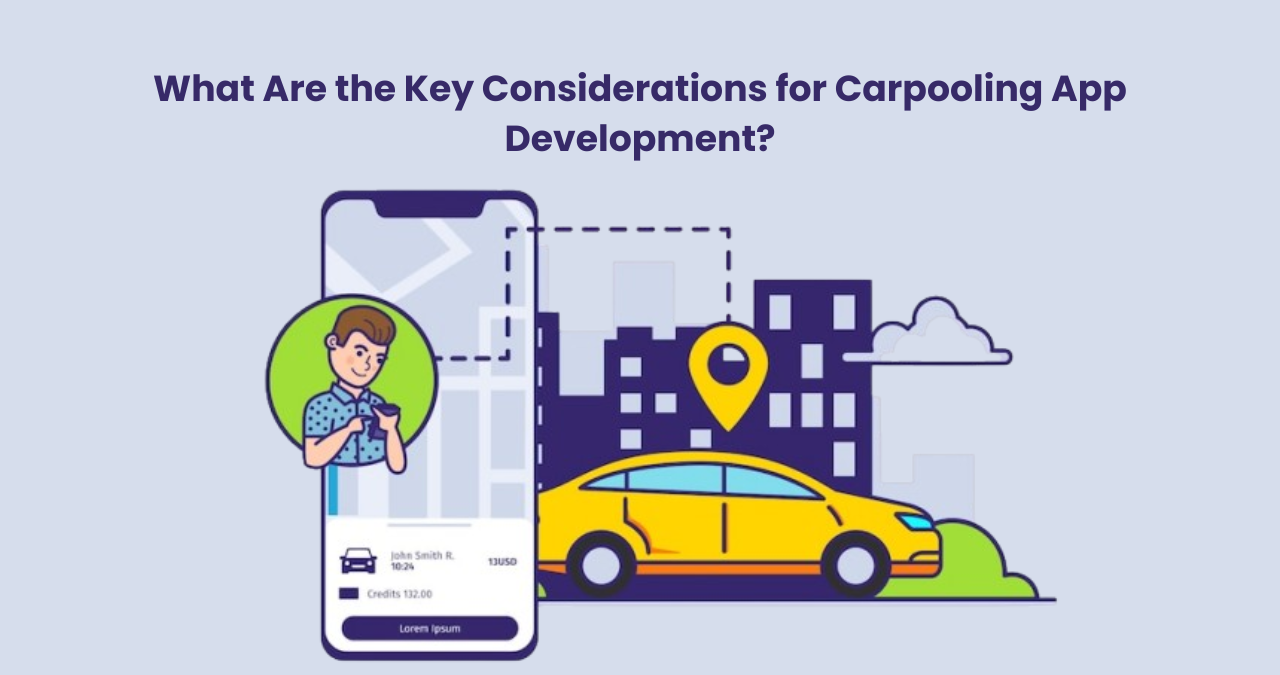What Are the Key Considerations for Carpooling App Development?
With the increasing concern over environmental sustainability, high transportation costs, and urban traffic congestion, carpooling apps have emerged as a popular solution. These apps provide users with an opportunity to share rides, reduce carbon footprints, and save money. However, creating a successful carpooling script involves more than just developing a mobile platform. Developers must consider several key aspects to ensure the app functions smoothly, attracts users, and achieves long-term success.
In this blog post, we will explore the most important factors to consider when developing a carpooling app. From user experience to legal concerns, each element plays a significant role in creating a robust, user-friendly, and efficient platform.
User Experience (UX) and Interface Design
The user experience is the cornerstone of any successful mobile app, and carpooling apps are no exception. A smooth, intuitive, and easy-to-navigate interface is crucial to attracting users and ensuring they return for future rides.
Simplicity in Design
When developing a carpooling app, the design should be as simple as possible. Most users want to complete their tasks—such as finding a ride, booking a seat, and paying—quickly and without confusion. The app’s design should focus on functionality, with all key features easily accessible and straightforward to use.
For example, the home screen should display essential options like “Find a Ride,” “Offer a Ride,” and “Track My Ride” clearly. Users shouldn’t have to dig through multiple menus to find what they’re looking for. Clear icons, large buttons, and legible text contribute to a positive user experience.
Easy Registration and Onboarding
Carpooling apps should offer a seamless registration and onboarding process. Complicated sign-up forms or lengthy registration procedures can frustrate users and cause them to abandon the app. Consider integrating social media logins or Google sign-in for faster and easier access.
During onboarding, the app should walk users through the main features, ensuring they understand how to use the platform. For instance, explain how to offer a ride, request a carpool, and view ride details.
Real-Time Notifications and Tracking
Real-time tracking is a key feature in carpooling apps. Users need to track the status of their ride, including the arrival time and the current location of the driver. Push notifications should also be implemented to notify users of ride updates, changes in routes, or driver arrivals. This keeps users informed and helps build trust in the app’s reliability.
Safety and Security Measures
Safety is one of the top concerns for users when it comes to carpooling apps. Since the app involves sharing rides with strangers, ensuring the safety and security of both drivers and passengers is crucial. Developers must implement various measures to protect users and provide peace of mind.
User Verification and Profile Management
A critical element of any carpooling platform is ensuring that both drivers and passengers are verified. Before using the app, users should be required to create detailed profiles that include basic information, a profile picture, and a valid ID. Additionally, background checks should be performed on drivers to screen for any criminal history or unsafe driving records. Many apps also incorporate ratings and reviews, allowing users to rate each other after each ride.
In-App Communication
Allowing passengers and drivers to communicate through the app is another way to ensure safety. In-app messaging or calls prevent the need to share personal phone numbers, which can protect both parties. This feature also allows users to ask questions, clarify details, or report issues before, during, or after the ride.
Emergency Features
Incorporating emergency features in the app is essential for providing an extra layer of protection. Features like an emergency button that alerts local authorities or emergency contacts in case of an accident or unsafe situation can significantly enhance user trust.
Real-Time Ride Tracking
In addition to tracking the car’s route, offering a “ride-share” feature with friends or family can provide users with extra assurance. This allows loved ones to see where the user is at any given time during the ride.
Cost Structure and Pricing Models
One of the main reasons users turn to carpooling apps is to save money on transportation. As a result, determining an appropriate pricing model is essential for ensuring that users feel they are getting value for their money while also keeping the platform profitable for the app developers.
Dynamic Pricing vs. Fixed Pricing
There are two main types of pricing models to consider: dynamic pricing and fixed pricing. Dynamic pricing adjusts the cost of rides based on factors like demand, time of day, and traffic conditions, similar to what Uber and Lyft use. Fixed pricing, on the other hand, charges a set rate per mile or kilometer.
The choice of pricing model will depend on the app’s target market. Dynamic pricing is suitable for areas with fluctuating demand, while fixed pricing is better for areas with consistent traffic patterns. Regardless of the model, pricing transparency is essential to avoid user confusion and dissatisfaction.
Cost Sharing and Payment Options
Carpooling apps should allow users to share the ride cost fairly. This means implementing an equitable fare-sharing system that splits the cost between all riders based on distance, time, and route. Payment options should be diverse and secure, with integrations for popular payment methods like credit/debit cards, e-wallets, and mobile payment systems.
Integration with Maps and GPS Technology
Carpooling apps rely heavily on GPS and map technologies to connect passengers with drivers and offer accurate navigation. Without a solid GPS, users would struggle to find rides or would be stuck in traffic due to inefficient route planning.
Accurate Mapping and Navigation
Integrating real-time mapping systems into the app is critical. Google Maps and Apple Maps are commonly used for location tracking and route planning. The app should provide accurate directions, traffic updates, and estimated time of arrival (ETA) to ensure smooth travel. Additionally, real-time traffic data can help drivers avoid congestion and optimize routes.
Ride Matching Algorithms
The app’s algorithm must match drivers with passengers based on proximity, ride preferences, and timing. For example, a passenger traveling from one side of town to another should be matched with a driver whose route passes through their location. This matching process should also take into account vehicle capacity, preferred car types, and other user preferences.
Multi-Destination Support
For users traveling with multiple stops along the way, the app should offer multi-destination features. This is especially useful for individuals who need to carpool while running errands or who are sharing a ride with multiple passengers who have different drop-off points.
Legal and Regulatory Compliance
Before launching a carpooling app, it’s important to ensure that the platform adheres to local laws and regulations. Depending on the location, carpooling services may be subject to specific requirements, including driver background checks, insurance, and liability clauses.
Insurance and Liability
Carpooling apps should have clear policies about liability in case of accidents. For example, if a driver is involved in an accident during a ride, the app must determine who is responsible for damages. Partnering with insurance companies that cover drivers and passengers is essential to ensure adequate protection.
Data Privacy and Protection
Since carpooling apps collect personal information such as names, addresses, and payment details, they must comply with data privacy laws such as GDPR or CCPA. Implementing robust data protection measures and secure encryption is essential for safeguarding user information.
Licensing and Permits
Different regions may require specific licenses for rideshare or carpooling services. Developers should consult legal experts to ensure that the app complies with local transportation laws, including regulations on carpooling, permits for commercial rides, and necessary safety measures.

Conclusion
Developing a successful carpooling app requires careful consideration of multiple factors to ensure that users have a positive and secure experience. From providing a user-friendly design and reliable ride matching to ensuring safety features and legal compliance, there are several key aspects that an app developer must focus on.
An on-demand mobile app development company that specializes in mobility solutions can help create a well-rounded platform that meets user needs, adheres to industry standards, and stands out in a competitive market. By addressing these important considerations, businesses can build a carpooling app that fosters trust, increases user satisfaction, and contributes to a greener, more efficient transportation system.














Post Comment